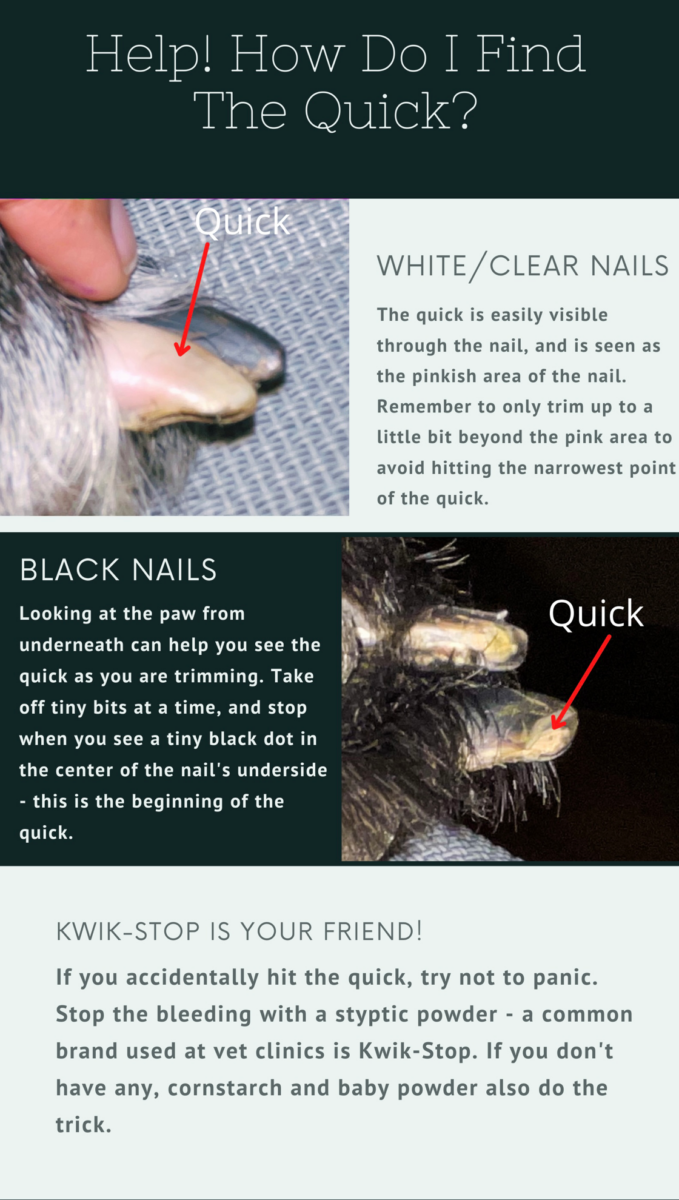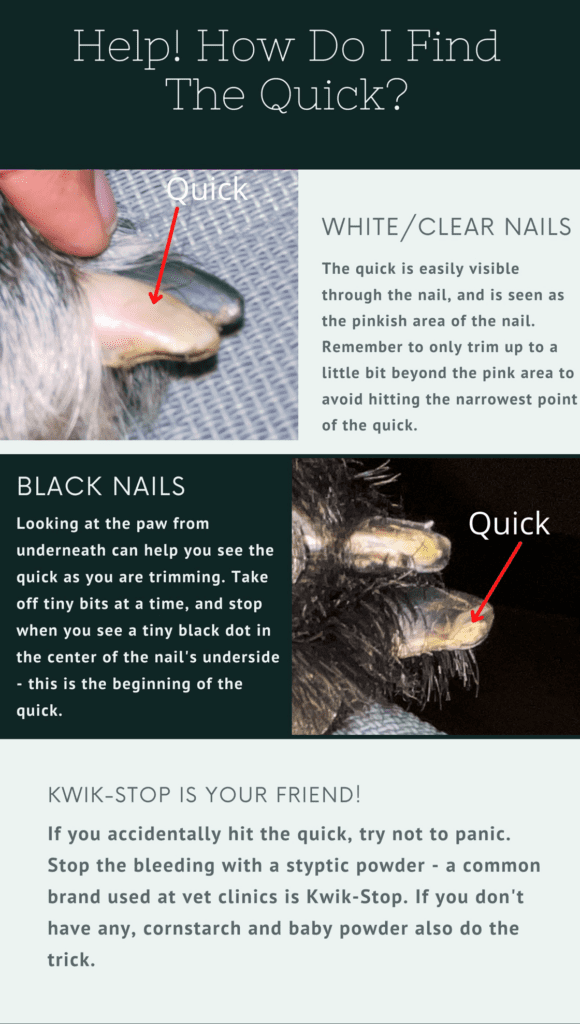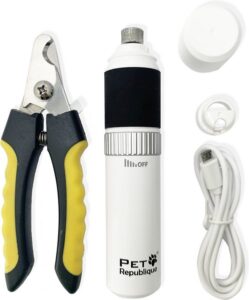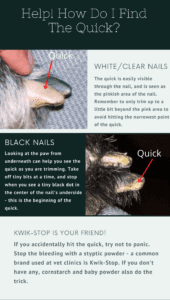Finding the Quick
Great – so now your dog is learning that nail trims are not the end of the world. Our next job is to prevent him from reverting to old fearful mindsets by trimming them safely. The last thing you need after all your hard work is to accidentally making him bleed and go right back to square one. In order to avoid that, you need to have a basic understanding of the anatomy of a dog’s nails.
The canine nail is composed of a protein called keratin, just like ours. Within it, they have both a blood vessel (called the “quick”) and a nerve. If you cut too much of their nail off, you risk hitting the quick, causing bleeding and a lot of pain. If you look at your own hands, you’ll notice the pinkish area under your nails, where there is a bed of tiny blood vessels called capillaries. When you break your nail or otherwise trim it all the way into the capillary bed, it starts to bleed and feel very painful. Dogs experience something similar when clippers cut into their quicks, so it’s important to not try and take too much off at a time.
If your dog has white nails, you have it a little easier. Quicks are easy to see in white nails – they are the pinkish part of the nail. The quick gets narrower at the end that grows out, and the very tip of it is so thin it’s hardly visible, so be sure to cut the nail just a little bit beyond the pink area.
Dogs with black nails are a bit more of a challenge. Because you can’t see the quick through the nail itself, the best way to avoid hitting it is to flip your dog’s paw over and look at the nail from underneath. As you are trimming, you will notice the appearance of a tiny black dot in the center of the nail from below – this is the beginning of the quick and an indicator that you have cut enough of the nail off.
When I was learning to use nail clippers (I needed a crash course because I’d only ever used a Dremel), the most common phrase repeated to me was “don’t be a hero”. It’s better to take off tiny bits of the nail at a time than to accidentally hit the quick because you were too ambitious.
Another thing to know about quicks is that they grow out with the nail. If your dog’s nails have not been regularly trimmed, their quick gets longer and longer, making nail trims even more difficult. The good thing is that regularly trimming helps push the quicks back – you just have to be careful and patient, trimming them down bit by bit until the quicks recede.
If you accidentally hit the quick, don’t panic. Use styptic powder to stop the bleeding (at GFAH, Kwik-Stop is a commonly used brand). If you don’t have any, cornstarch and baby powder can also be used. Dogs don’t suffer long-term damage from quick-ed nails, but they might hold a grudge and resist the next time you try to trim them.



